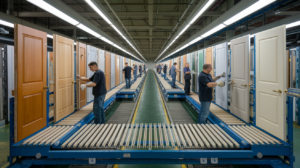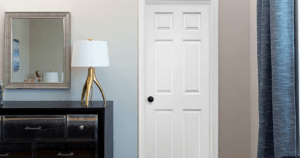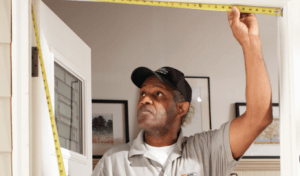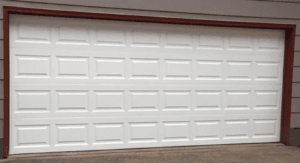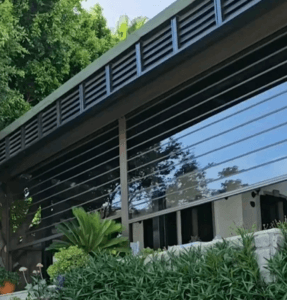Introduction:
In commercial spaces, excessive noise can be a major distraction and hinder productivity. Effective soundproofing solutions play a crucial role in creating a peaceful and productive environment for employees and clients alike. In this comprehensive guide, we will explore the key techniques and considerations for soundproofing commercial spaces. By implementing these strategies, you can minimize noise transmission and ensure a more focused and comfortable atmosphere, ultimately boosting productivity and satisfaction.
- Assessing Noise Sources:
Before implementing soundproofing measures, it is important to identify the primary sources of noise in your commercial space. Common noise sources include HVAC systems, office equipment, conversations, foot traffic, and external factors such as traffic or construction. By understanding the specific noise sources, you can better target your soundproofing efforts.
To assess noise sources, conduct a thorough evaluation of your space during different times of the day. Use sound level meters or smartphone apps to measure noise levels and identify the loudest areas. This assessment will help you determine the most effective soundproofing techniques to employ.
- Soundproofing Walls:
One of the most effective ways to reduce noise transmission is by soundproofing the walls. Consider the following techniques:
- Adding Mass: Increase the density of the walls by using materials such as mass-loaded vinyl, acoustic panels, or double-layered drywall. These materials absorb and block sound waves, reducing noise transmission. Additionally, consider using resilient channels or sound isolation clips to decouple the drywall from the studs, further reducing sound vibrations.
- Insulation: Install soundproof insulation within the walls to absorb and dampen sound vibrations. Materials like mineral wool or cellulose insulation can significantly improve soundproofing capabilities. Fill any gaps or cavities in the walls with insulation to prevent sound leakage.
- Sealing Gaps: Seal any gaps or cracks in the walls to prevent sound leakage. Use acoustic caulk or weatherstripping to ensure a tight seal around windows, doors, and electrical outlets. Pay attention to areas where pipes or cables penetrate the walls, as these can be potential sound leakage points.
- Soundproofing Doors:
Doors are common areas for sound leakage due to gaps and lack of insulation. Consider the following techniques to soundproof doors:
- Solid Core Doors: Replace hollow core doors with solid core doors, which are denser and provide better sound insulation. Solid core doors are made of a solid material, such as wood or composite, and are more effective at blocking sound transmission.
- Weatherstripping: Install weatherstripping around the door frame to create a tight seal and prevent sound leakage. Use adhesive-backed foam tape or door sweeps to seal the gaps between the door and the frame.
- Automatic Door Bottoms: Install automatic door bottoms that seal the gap between the door and the floor when closed, effectively blocking sound transmission. These devices are spring-loaded and retract when the door is opened, allowing for easy passage.
- Soundproofing Windows:
Windows are another potential source of noise infiltration. Consider the following techniques to soundproof windows:
- Double Glazing: Install double or triple-pane windows with an air gap in between. This additional layer of glass and insulation helps reduce noise transmission. Opt for laminated glass, which has a layer of plastic between the glass panes, as it provides better sound insulation.
- Window Treatments: Hang heavy curtains or install soundproof window panels to absorb sound waves and reduce noise infiltration. Choose curtains with thick fabrics or consider adding a layer of soundproofing material behind the curtains for enhanced noise reduction.
- Acoustic Films: Apply acoustic films to the windows, which can help dampen sound vibrations and improve sound insulation. These films are transparent and can be easily applied to the glass surface.
- Acoustic Ceiling Treatments:
Ceilings can contribute to noise transmission, especially in open office spaces or areas with high ceilings. Consider the following techniques for soundproofing ceilings:
- Acoustic Panels: Install acoustic panels on the ceiling to absorb sound waves and reduce reverberation. These panels come in various designs and can be customized to match the aesthetics of your space. Place the panels strategically in areas where noise reflection is high, such as above workstations or in meeting rooms.
- Suspended Ceilings: Install a suspended ceiling system with sound-absorbing tiles or panels. This not only improves sound insulation but also provides easy access to utilities and wiring. Choose tiles with high Noise Reduction Coefficient (NRC) ratings for better sound absorption.
- Insulation: Consider adding insulation above the ceiling to further reduce noise transmission. Insulation materials like fiberglass or mineral wool can be installed between the ceiling joists to absorb sound vibrations.
- Flooring Considerations:
Flooring materials can impact noise transmission within a commercial space. Consider the following techniques for soundproofing floors:
- Carpeting: Install carpet or carpet tiles with a thick underlay to absorb sound vibrations and reduce noise transmission. Choose carpets with higher pile density and thicker underlays for better sound insulation.
- Acoustic Underlayment: Use acoustic underlayment beneath hard flooring materials like hardwood or laminate to dampen sound vibrations. These underlayments are typically made of materials like cork or rubber, which provide additional sound insulation.
- Rubber Mats: Place rubber mats or anti-vibration pads under heavy equipment or machinery to minimize noise and vibrations. These mats absorb sound and prevent it from transmitting through the floor.
- Office Layout and Furniture Arrangement:
The layout and arrangement of furniture can also impact noise levels within a commercial space. Consider the following techniques:
- Strategic Placement: Position workstations, meeting rooms, and communal areas in a way that minimizes noise interference. Create separate zones for quiet work and collaborative activities. Place noisy equipment or machinery away from quiet areas to reduce sound disruption.
- Acoustic Partitions: Install acoustic partitions or screens to create visual and sound barriers between different areas, reducing noise transmission. These partitions can be made of sound-absorbing materials like fabric-wrapped panels or acoustic glass.
- Sound-Absorbing Furniture: Choose furniture with sound-absorbing materials or upholstery to help dampen noise and improve acoustics. Consider using fabric-covered chairs, sound-absorbing panels on desks, or acoustic panels integrated into office dividers.
Conclusion:
Implementing effective soundproofing solutions in your commercial space is essential for creating a peaceful and productive environment. By assessing noise sources, soundproofing walls, doors, windows, ceilings, and floors, and considering office layout and furniture arrangement, you can significantly reduce noise transmission and improve overall acoustics. A quieter and more focused environment will enhance productivity, concentration, and satisfaction among employees and clients. With this comprehensive guide, you are now equipped with the knowledge to implement soundproofing techniques that will help your commercial space rank higher in Google searches and attract more traffic.


